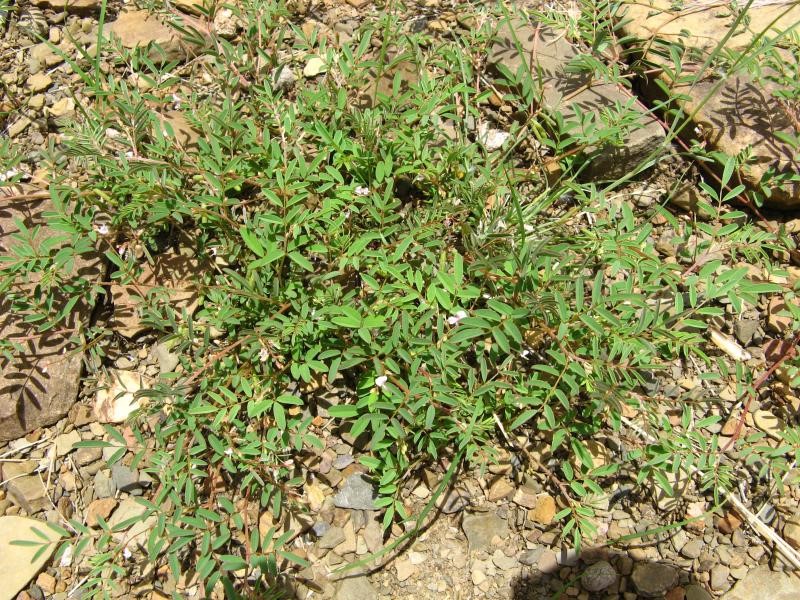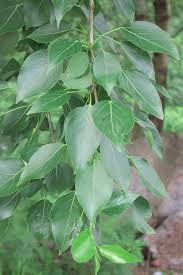October 21, 2020 at 9:36 pm | Updated March 16, 2022 at 11:45 am | 6 min read
Drought is one of the most common forms of stress that affects plants both in the wild and in farms. Drought is predicted to increase in frequency and intensity in tropical and subtropical areas of the world due to climate change. We know that plants will defer in their response to changing environmental conditions. Hence, scientists are urgently trying to understand how plants react under stress. Portable precision tools that can be used outside laboratories are a great asset in these research studies.
Trade-Offs Exist
Trade-offs exist between plant growth and defense against stress. Thus, plants will invest more resources in growth when conditions are favorable and more towards overcoming stress when faced with drought.
During drought, it is usually expected that plants will invest more biomass to grow roots so that they can access water. However, this comes at the expense of allocation to above-ground parts and reproductive structures, according to the optimal partitioning theory.
Subscribe to the CID Bio-Science Weekly article series.
By submitting this form, you are consenting to receive marketing emails from: . You can revoke your consent to receive emails at any time by using the SafeUnsubscribe® link, found at the bottom of every email. Emails are serviced by Constant Contact
The response of plants to drought will, however, differ. There can be interspecific variations within a single genus, and herbaceous plants could react differently compared to woody plants, especially if they are perennials. Also, according to the allometric partitioning theory, the size of plants can influence to what extent drought will change biomass allocation within a plant.
In addition, the physiological response can differ; for example, transpiration can vary to affect the water use efficiency of plants.
Another aspect that interests scientists is the existence of differences to drought stress, if any, between cultivated and wild plants.
The leaf area is a vital parameter used by scientists to explore biomass allocation strategies among plants. Plucking leaves to measure them would place added stress on plants, which are already suffering from drought. Moreover, it can affect the efficiency of the study. Instruments that make non-destructive measurements are, therefore, a better option.
Below, we discuss a few studies and the modern instruments used in each.
Interspecific Differences in Herbs
In natural habitats of savanna and grasslands, water is one of the main limiting factors for plant growth. It can affect forage production and, therefore, the income of agro-pastoral and pastoral farmers.

Figure 1: I. vicioides plant. (image credits: http://www.kyffhauser.co.za/Plants1/Indigofera_vicioides_var_vicioides/Image4.htm)
Indigofera species are common forage plants in African savannas. The effect of drought on their leaf or biomass production is a crucial factor in the productivity of the grasslands. Plants that have a better water use efficiency (WUE) are likely to produce more biomass.
The physiological response of four Indigofera species that are herbs were tested in a greenhouse. The species selected were I. amorphoides, I. arrecta, I. coerulea, and I. vicioides. Two plants were maintained in each pot, and each species was grown in 24 containers. They were subjected to two levels of water stress, where plants were given 40–70% plant available water (PAW) and 10–40% PAW; a third treatment had no water stress and was maintained at 70–100% PAW.
Two sets of measurements were compared: one before the water stress was introduced and the second after twenty-one days of water stress.
Leaves were destructively harvested to measure for leaf area and weight. The total number of leaves and the biomass of leaves, stem, and roots were also measured.
From these data, the relative growth rate, specific leaf area, leaf area ratio (the ratio of leaf weight to total biomass weight), and net assimilation rate were calculated.
The leaf area was measured with a portable CI-202 Portable Laser Area Meter, manufactured by CID Bio-Science Inc. It gives the leaf length, width, area, perimeter, and aspect ratio within seconds. The instrument can measure leaves of a wide range of width and thickness.
The experiment showed there was considerable variation between the species in response to drought.
Drought reduced the leaf area expansion and canopy size of I. amorphoides, even at moderate stress levels, but affected I. vicioides only when the stress was severe. Reducing the leaf area is one way of avoiding water stress by trying to reduce the area in which transpiration occurs.
I. amorphoides diverted resources from growing leaves and allocated its biomass into developing a bigger root system. This was the species that had the least tolerance to drought, as its water use efficiency is low.
I.vicioides, on the other hand, was not affected significantly by the drought and maintained its above-ground biomass. Its water use efficiency increases more during water stress than during times when there is no stress. As a result, plants can produce more biomass for each unit of water absorbed.
The other two species, I. arrecta or I. coerulea, do not differ in their response to drought, but neither are as hardy as the I. viciodes nor as sensitive as the I. amorphoides.
For future pasture management, it could be profitable for farmers to irrigate I. viciodes, as it has the best WUE efficiency. I. amorphoides is the species that is likely to give the least returns during water stress, and it is not economical to invest in watering them.
Trees Show a Similar Pattern
A similar response to drought was also observed in trees in China. Two species of Populus, P. cathayana and P. przewalskii, had interspecific differences in their strategy for dealing with water stress.

Populus cathyana. (Image credits: https://onlinelibrary.wiley.com/doi/pdf/10.1002/9783527678518.ehg2005018)
Once again, scientists grew the two species in pots and raised them in greenhouses. There were two treatments used. One where the trees were watered to 100% field capacity and had no water stress. In the second treatment, trees received only 25% field capacity of watering, which amounts to severe water stress.
The effect of drought was studied on early growth, dry matter allocation, and water use efficiency. The parameters that were measured in this experiment were shoot height, number of leaves, leaf area, dry matter accumulation, and fine root biomass. From these data, the fine root/total root ratio, root mass/foliage mass ratio, and root/shoot ratio were calculated.
The leaf area was measured by a leaf meter. This time it was the CI-203 Handheld Laser Leaf Area, produced by CID Bio-Science Inc. It is an instrument that can be operated with a single hand and is smaller than the CI-202. It also rapidly measures leaf length, width, area, perimeter, shape factor, aspect ratio, and void count. The GPS incorporated in the tool helps in testing the plants later, if growth rates are being considered.
During water stress, P. przewalskii invested more of its dry matter into growing roots, as its water use efficiency is low; thus, foliage and shoot growth suffered. The fine root/total root ratio, root mass/foliage mass ratio, and root/shoot ratio were higher than those seen in P. cathayana. The latter species is more drought-tolerant. The scientists concluded that there is an inherent genetic difference behind the varied response to drought shown by the two tree species.
Since the poplar species are commonly grown in China, these results can ensure better management of forestry plantations. The study shows that P. przewalskii will suffer more compared to P. cathayana during the same drought. Future expansions in forests should keep this in mind while planting trees, and early harvests can prioritize P. przewalskii.
Choosing the Optimal Species
Some strategies of dealing with drought can depend on the size or plant habit. However, a similar trend was seen in both herbs and trees in the two experiments. The studies also show that genetic differences can exist within the same size-class. The genetic variations are very apparent at the species level. These results can advise species choice in projects, especially those that involve natural habitats where irrigation is not possible or feasible. Drought-tolerant species will have to be used in places where above-ground biomass production is important. However, it should be noted that below-ground carbon poll formations compensate for the loss in above-ground biomass, and that is a silver lining in times when climate change is getting stronger.
—
—
Vijayalaxmi Kinhal
Science Writer, CID Bio-Science
Ph.D. Ecology and Environmental Science, B.Sc Agriculture
Feature image courtesy of Denise Krebs
Sources
Eziz, A., Yan, Z., Tian, D., Han, W., Tang, Z., & Fang, J. (2017). Drought effect on plant biomass allocation: A meta-analysis. Ecology and Evolution, 7(24), 11002–11010. doi: 10.1002/ece3.3630
Hassen, A., Rethman, N.F.G., Apostolides, Z., & van Niekerk, W.A. (2007) Influence of moisture stress on growth, dry matter yield and allocation, water use and water-use efficiency of four Indigofera species, African Journal of Range & Forage Science, 24:1, 25-34, DOI: 10.2989/102201107780178195
Mishra, B.K., Srivastava, J.P., Lal, J.P. et al. Physiological and biochemical adaptations in lentil genotypes under drought stress. Russ J Plant Physiol 63, 695–708 (2016). https://doi.org/10.1134/S1021443716040117
Yin, C., Wang, X., Duan, B., Luo, J., & Li, C. (2005). Early growth, dry matter allocation and water use efficiency of two sympatric species as affected by water stress. Environmental and Experimental Botany, 53(3), 315–322. doi: 10.1016/j.envexpbot.2004.04.007
Related Products
Most Popular Articles
- Transpiration in Plants: Its Importance and Applications
- Leaf Area – How & Why Measuring Leaf Area…
- How to Analyze Photosynthesis in Plants: Methods and Tools
- Plant Respiration: Its Importance and Applications
- The Forest Canopy: Structure, Roles & Measurement
- Stomatal Conductance: Functions, Measurement, and…
- Forest & Plant Canopy Analysis – Tools…
- Root Respiration: Importance and Applications
- The Importance of Leaf Area Index (LAI) in…
- Irrigating with Saline or Seawater






